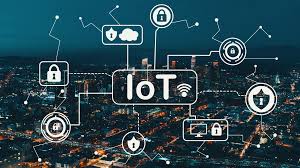The Rise of Smart Technologies: How IoT Is Changing Our Lives
In recent years, we have witnessed a technological revolution that has fundamentally transformed how we interact with the world around us. At the heart of this transformation is the Internet of Things (IoT) — a network of interconnected devices that communicate with each other and share data over the internet. IoT has rapidly expanded beyond just smartphones and computers, creating a vast ecosystem of smart devices that influence nearly every aspect of our daily lives.
From smart homes and wearable devices to connected cars and healthcare solutions, IoT is reshaping industries, enhancing convenience, improving efficiency, and even saving lives. But what exactly is IoT, how does it work, and how is it changing the way we live and interact with technology?
In this article, we will explore the rise of smart technologies, the profound impact of IoT on our lives, and the potential for this technology to revolutionize our future.
1. What is IoT (Internet of Things)?
The Internet of Things (IoT) refers to the network of physical objects, devices, or “things” embedded with sensors, software, and other technologies that allow them to collect and exchange data. These objects range from everyday household items like refrigerators, thermostats, and lights, to complex industrial machines used in manufacturing and agriculture. By connecting these objects to the internet, IoT enables them to share data, communicate with each other, and sometimes even make autonomous decisions.
In simpler terms, IoT is a way to make objects smarter by connecting them to the internet, allowing them to work together to create a seamless experience for the user. The idea behind IoT is to enable devices to perform tasks or provide insights without requiring constant human intervention.
How IoT Works
- Devices & Sensors: IoT starts with sensors and devices that collect data. These devices can be anything from a fitness tracker measuring steps to a smart thermostat monitoring temperature.
- Connectivity: These devices connect to a central hub or the cloud via Wi-Fi, Bluetooth, or other communication technologies like Zigbee, LTE, or 5G. This connection allows devices to transmit data to other devices or systems.
- Data Processing: Once the data is transmitted, it’s processed either on the cloud or at the edge (closer to the device). This data is analyzed to derive useful information or trigger specific actions.
- Action: Based on the processed data, IoT systems can take actions, such as adjusting the temperature in a room, sending an alert, or even performing automated tasks.
The growth of IoT is fueled by the increasing availability of sensors, improved connectivity, and advancements in cloud computing and data analytics. As the IoT ecosystem expands, more devices are becoming “smart,” and more industries are benefiting from these innovations.
2. How IoT Is Changing Our Everyday Lives
a. Smart Homes: A New Era of Convenience
One of the most visible and impactful applications of IoT is in smart homes. Smart home devices are designed to enhance convenience, efficiency, and security by enabling users to control home appliances and systems through a smartphone or voice commands.
- Smart Thermostats: Devices like Nest or Ecobee learn your heating and cooling preferences over time and can adjust the temperature automatically to optimize comfort and save energy.
- Smart Lighting: Smart bulbs, such as Philips Hue or LIFX, can be controlled remotely, allowing users to adjust the lighting or set schedules based on their needs. These devices can even change colors and brightness based on mood or time of day.
- Security Systems: Smart security systems, including doorbell cameras (e.g., Ring) and motion detectors, allow homeowners to monitor their property remotely, receive alerts, and even interact with visitors without being physically present.
- Smart Speakers and Voice Assistants: Amazon Alexa, Google Assistant, and Apple Siri allow users to control devices, play music, set reminders, check the weather, and more, all through voice commands.
These innovations are not only making our homes more efficient but also more energy-conscious and secure. By leveraging data and automation, smart home technologies provide a level of convenience that was once unimaginable.
b. Wearables: Empowering Personal Health and Fitness
Wearable devices such as smartwatches, fitness trackers, and health monitors have brought IoT into the realm of personal health and fitness. These devices are equipped with sensors that track physical activity, heart rate, sleep patterns, and even blood oxygen levels. Popular devices like the Apple Watch, Fitbit, and Garmin enable users to monitor their health metrics in real-time and set goals for fitness improvements.
Beyond fitness tracking, wearables are also playing a key role in healthcare by providing early warning signs of health issues. For example, some smartwatches can detect irregular heartbeats or blood pressure fluctuations, alerting users to seek medical attention before an issue becomes serious.
The data collected by wearables is often synced to cloud-based platforms, where it can be analyzed by healthcare professionals to help manage chronic conditions or offer personalized health recommendations.
c. Smart Transportation: The Future of Mobility
IoT is revolutionizing the way we travel and commute, especially with the advent of smart transportation systems. These systems use sensors, GPS, and real-time data to improve traffic flow, reduce accidents, and optimize routes for drivers.
- Connected Cars: IoT technology is making cars smarter by providing features such as navigation, predictive maintenance, and remote control via smartphone apps. For instance, Tesla vehicles are equipped with IoT capabilities that enable over-the-air software updates, advanced driver-assistance systems (ADAS), and real-time monitoring of vehicle health.
- Traffic Management: IoT is also enhancing public transportation systems and traffic management. Smart traffic lights, connected sensors on roads, and real-time data collection help reduce congestion, improve route planning, and enhance overall efficiency.
- Electric Vehicles (EVs): With the rise of electric vehicles, IoT plays a significant role in monitoring battery health, tracking vehicle performance, and finding charging stations. Many EVs are now capable of providing detailed data on energy consumption, driving habits, and route optimization.
As autonomous vehicles and electric transportation technologies continue to evolve, the role of IoT in mobility will expand, making transportation safer, more efficient, and more sustainable.
d. Industrial IoT (IIoT): Revolutionizing Manufacturing
In industries like manufacturing, logistics, agriculture, and energy, Industrial IoT (IIoT) is driving major advancements. By connecting machines, equipment, and systems, IIoT allows organizations to monitor operations in real-time, improve efficiency, and predict maintenance needs.
- Predictive Maintenance: IoT-enabled sensors can monitor the performance of machinery and equipment. By analyzing data such as vibration, temperature, and pressure, businesses can predict when a machine will fail, minimizing downtime and reducing repair costs.
- Smart Factories: IoT is central to the development of “smart factories,” where machines, sensors, and robots communicate with each other to automate processes, track inventory, and optimize workflows.
- Supply Chain Optimization: IoT allows businesses to track inventory, shipments, and deliveries in real-time, providing greater transparency and reducing supply chain inefficiencies.
The integration of IoT in industrial applications is helping companies improve productivity, reduce waste, and make more informed decisions.
e. Healthcare: Improving Patient Care and Efficiency
In the healthcare industry, IoT is transforming how care is delivered. With IoT devices, healthcare providers can monitor patients remotely, track their health in real-time, and even predict potential health issues before they arise.
- Remote Monitoring: Wearable health devices and IoT-enabled medical equipment allow doctors to monitor patients’ vital signs and conditions remotely. This is especially useful for patients with chronic illnesses, allowing for timely interventions and reducing the need for frequent in-person visits.
- Smart Hospitals: IoT is making hospitals more efficient by optimizing resource management, tracking equipment, and improving the patient experience. For example, RFID tags are used to track medical equipment, ensuring that critical devices are readily available when needed.
- Telemedicine: IoT plays a significant role in the growing field of telemedicine, where remote consultations between patients and doctors can be conducted via connected devices. This is particularly beneficial in rural areas or during times when in-person visits are not feasible.
By using real-time data and analytics, IoT is making healthcare more personalized, accessible, and efficient.
3. Security and Privacy Concerns with IoT
While IoT brings immense benefits, it also raises serious concerns about security and privacy. The more connected our devices become, the more vulnerable they are to cyberattacks. Hackers could potentially exploit security vulnerabilities in IoT devices to gain unauthorized access to networks, steal personal data, or even disrupt critical systems.
- Weaknesses in Device Security: Many IoT devices, especially in the consumer market, are not designed with robust security in mind. This creates entry points for cybercriminals to exploit.
- Data Privacy: IoT devices collect vast amounts of personal data, from health metrics to daily routines. Without proper safeguards, this data could be accessed or used inappropriately, leading to privacy violations.
To mitigate these risks, it is essential to ensure that IoT devices are designed with strong security features, such as encryption, authentication, and regular software updates. Consumers must also be vigilant about the data they share and the devices they use.
4. The Future of IoT
The future of IoT is incredibly promising, with advancements in 5G connectivity, artificial intelligence (AI), and edge computing accelerating the growth of smart technologies. IoT will continue to evolve and shape industries, offering new ways to interact with technology, optimize processes, and improve quality of life.
Some key trends to watch for in the future of IoT include:
- AI and Machine Learning Integration: IoT devices will become even smarter as they integrate AI and machine learning. These devices will be able to make more intelligent decisions and predictions, further enhancing automation and efficiency.
- 5G Networks: The rollout of 5G networks will enable faster, more reliable connections between IoT devices, making real-time data processing and communication even more seamless.
- Edge Computing: As more IoT devices generate massive amounts of data, edge computing will play a significant role in processing that data closer to the source, reducing latency and improving decision-making.
Conclusion
The rise of smart technologies and IoT is revolutionizing the way we live, work, and interact with the world. From transforming homes and transportation to revolutionizing industries like healthcare and manufacturing, IoT is creating new opportunities for increased efficiency, convenience, and sustainability. However, with these advancements come challenges related to security and privacy that must be addressed to fully unlock the potential of this technology.
As IoT continues to expand and evolve, it is clear that it will play an increasingly pivotal role in shaping our future, making our world more connected, intelligent, and automated. The impact of IoT on our lives is only just beginning, and the possibilities for innovation are endless.

